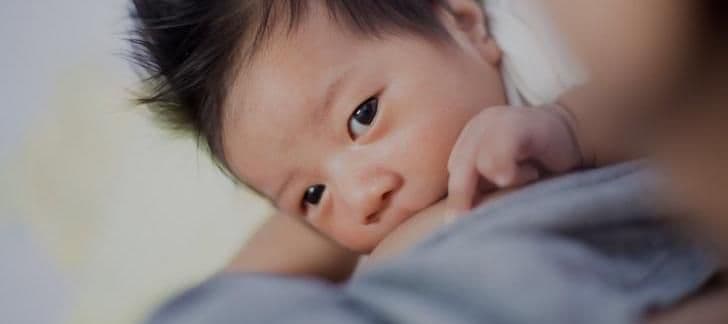Breastfeeding: Nursing Primarily on One Breast
Breastfeeding
Obie Editorial Team
 Infants are fickle creatures that know what they want and often get what they want with little fight. Breastfeeding is the natural feeding method preferred by infants, but that does not mean mother and infant will instantly find peace in the art of breastfeeding. Differences in nipple and areola shape and feel, breast milk production and other factors can leave baby preferring to breastfeed on one side over the other. While nursing primarily on one breast does not cause a malnutrition issue with most babies, there are some concerns new moms need to consider.
Infants are fickle creatures that know what they want and often get what they want with little fight. Breastfeeding is the natural feeding method preferred by infants, but that does not mean mother and infant will instantly find peace in the art of breastfeeding. Differences in nipple and areola shape and feel, breast milk production and other factors can leave baby preferring to breastfeed on one side over the other. While nursing primarily on one breast does not cause a malnutrition issue with most babies, there are some concerns new moms need to consider. Why Does Baby Prefer One Side?
There are plenty of reasons why baby would prefer the left or right breast. Some reasons are situational, like baby receiving a vaccination in the right arm. The vaccination may cause pain so baby gets fussy when nursing on the breast that requires him to lay on the right side. Ear infections and other medical issues can also cause pain that baby will try to avoid by preferring one breast.
Physical features of the breast may also come into play. While your nipples may look exactly the same to the naked eye, baby may feel subtle differences while breastfeeding. There is also the chance that the left or right breast lets down milk too slow leaving baby frustrated enough to prefer the opposite side.
How to Combat Nursing Primarily on One Breast
There are several tricks mom can use to feed baby equally from both breasts. Offering the less used breast while baby is still slightly tired or extremely hungry may decrease the likelihood of rejection. This tactic also helps keep milk production even on both sides so you do not end up with lopsided milk production. Changing how you hold baby while breastfeeding may also relieve nipple preference. Most mothers have a comfortable side and an awkward side, depending on whether they are right-handed or left-handed. Your preference may communicate to baby as tension or as a subtle difference in holding technique. When mom feels comfortable breastfeeding, baby is more apt to feel comfortable as well.
Are There Long-Term Problems Associated with Nursing Primarily on One Side?
There are no medical issues associated with nursing primarily on one side, but there are some physical changes in the body that may prove difficult later on. If one breast is not used regularly, milk production will dwindle. When baby hits a growth spurt and needs more milk, the little used breast may not be ready to meet baby’s needs. Women have also experienced a lopsided look from breastfeeding only on one side. Both low milk supply and lopsided appearance can be combated by pumping milk from the side baby does not prefer.









